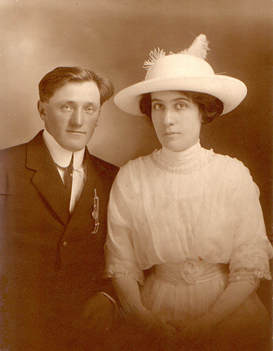 Photo by Aaron Burden on Unsplash The Toronto Branch of Ontario Ancestors recently hosted an online presentation by Matthias Sorg of Transkribus. This site is to transcribe documents both printed and handwritten text from various languages and sources us Artificial Intelligence (AI). Let’s look. According to its website, “Transkribus enables you to automatically recognise text easily, edit seamlessly, collaborate effortlessly, and even train your custom AI for digitizing and interpreting historical documents of any form.” It is an interesting concept and relatively straightforward to use. This a co-operative effort located in Austria.
You can choose to use the app.transkribus.ue or go to their website and use their tools. You are able to register for a free account as an individual and transcribe one hundred pages/month. You can also choose Try for free which allows you to upload a document to try. If you do sign up, you can create a collection to which you upload your files. You own your documents and can move, copy, delete or download. There are over 168 public models which you can use to transcribe your documents. You can filter by name, language, handwritten or printed or by century. As more documents are transcribed with various writing, the AI system learns and becomes better at transcribing. If you wish to export your document, you can do so as an image, pdf, docx, or text file (.txt). They plan to have additional file types in the future such as excel export, tag export and TEI (Text Encoding Initiative) Regarding privacy: The data security is in Austria and follows those privacy laws. You are in control of your data to upload or delete. Interestingly there are transforming models that can be used when you have a document with a mix of languages. My first attempt to transcribe a handwritten document was not quite as successful as I’d hoped but then it was a difficult document to read and the text was slanted instead of straight lines which is more difficult to read. When you do upload a document and transcribe it, the original document shows blue lines under each numbered sentence. The transcribed (typed) result has correlating numbered sentences. It is also a bit slow to upload documents, but this tool has an interesting future. I can see how this would help historians and genealogists to transcribe documents as the AI learns more. You can read more about the features here: transkribus.org and choose see features. If you prefer videos Mattias Sorg has a YouTube video I hope you have fun checking out Transkribus and exploring how you can use this new AI. As with all sites, please read the terms and privacy information to see if it is something that you want to pursue. Happy transcribing!
0 Comments
Leave a Reply. |
AuthorWith a lifelong passion for genealogy and history, the author enjoys the opportunity to share genealogy tidbits, inspiring others to research and write their family story. Archives
December 2023
Categories |



 RSS Feed
RSS Feed